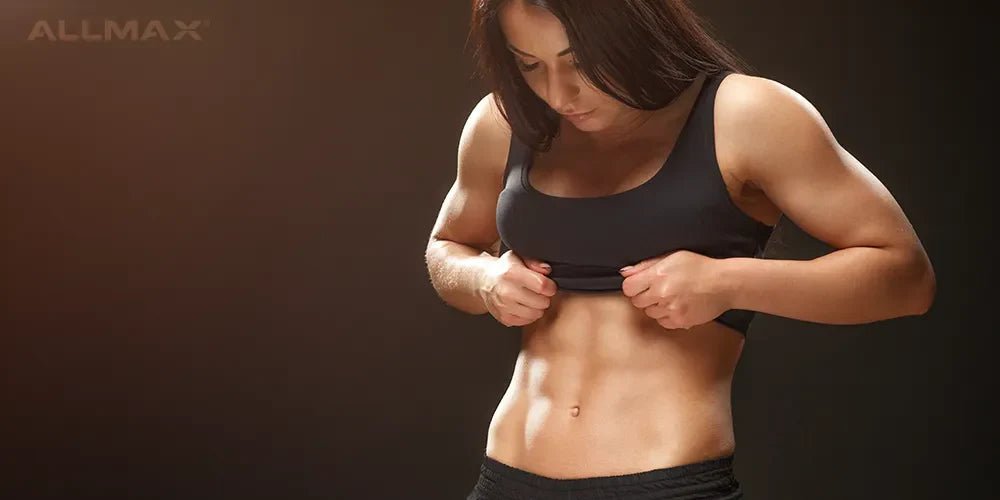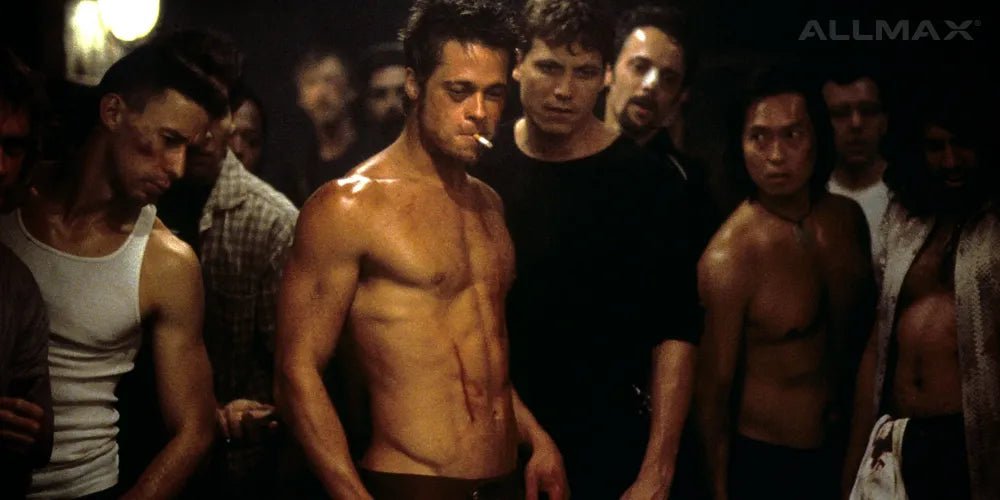Push-Pull Workouts: Routines and Guide for Building Muscle
Push exercises for building muscle include exercises for the chest, such as the incline bench press. This is a great exercise for push days because it also works the muscles at the front of the shoulders (anterior deltoids) and the triceps. Next add some version of shoulder press, such as the dumbbell shoulder press or the military press. This works the shoulders from all angles as well as the triceps. These two exercises hit all of the push muscles you want to target. Add in auxiliary exercises, as time permits, to ensure you hit each muscle group hard enough to trigger growth. Some exercises to add include the flat dumbbell press, adding a pause at the bottom to prevent you from using momentum to lift the weight, laterals raises, overhead extensions, and decline cable flyes. On your pull day workout, start by completing pull-ups. There is no exercise as effective at increasing the width of your back. Kneeling lat pulldowns replicate the muscular involvement of pull-ups, and are an effective substitute if you cannot perform a pull-up. Follow up with a bent row, which is another great back builder. Underhand lat pulldowns follow, working the lower back and biceps. Finally, hit the rear delts, which can be a challenge to target, with the chest-supported rear delt row. Adding in deadlifts to your pull routine provides an additional workout for your lower back while also hitting the hamstrings as a secondary muscle group. If you are new to weight training, this may be too much with leg day coming up tomorrow. If you are comfortable with lifting and want to be sure you are hitting all muscle groups hard, consider adding it in. Accessory exercises, such as the barbell curl and face pulls allow you to finish off your workout strong.Push-Pull-Leg Routine: Your Guide to the PPL Workout Split
The lower body is home to some of the largest muscles in the body. Targeting them effectively through a push pull legs workout is hard work and can be mentally and physically taxing. The most common and most popular exercise for lower body development is the back squat. It targets both quads and glutes, although the entire lower body, core, and even back get somewhat of a workout completing this exercise. If you have knee or back pain that makes completing back squats uncomfortable, consider the front squat instead. The front squat is nearly as effective at hitting the same muscles with less force applied to the back and knees. You can also get the same gains with less weight when performing the back squat. Hip thrusts come next, working the glutes and hamstrings. Hip thrusts allow you to work the glutes hard without the stress on your back and joints that occur from back squats. Although they shouldn’t replace squats in your routine, they make an effective addition. Next add a split leg workout, such as a split squat or front or rear lunge. These exercises are not only a great workout for your lower body, but strengthen the core and improve balance as well. Walking lunges are not an effective substitute, as the temptation with this exercise is to perform the exercise without going through the full range of motion. Adding in glute-ham raises or good mornings allows you to finish off the hamstrings. The calf muscles get a decent workout supporting your body through other exercises, so rotating between seated and standing calf raises on push pull legs day typically provides a sufficient workout.Push-Pull Strength Training Routine
Now that you know what exercises to perform, you are ready to build your routine. For the main exercises of each day, such as squats, chest presses, and pull-ups, plan to complete 3 to 4 sets of at least 6 and no more than 10 reps. The last reps of each set should be difficult, with the final reps of the final set feeling very challenging. Add weight as you gain strength. Perform 2 to 3 sets of 10 to 12 reps of accessory exercises, again, adding weight as needed to keep the exercise difficult, but doable.Why Simple Push and Pull Workout Routines Are the Best
Weight training doesn’t have to be difficult. There are certain facts that experts have learned about muscle development that apply to everyone. Following these guidelines, such as working each muscle group twice a week and allowing time for recovery between workouts, provide the best results.1. What is the best Push/Pull/Leg 6-day routine?
To fuel muscle growth and development, it is hard to beat the traditional push/pull/ leg 6-day routine. The breakdown involves working shoulders, chest, and triceps as push exercises, back, rear delts, and biceps for a pull day workout, and calves, quads, and hamstrings on leg day. Using a 6-day routine hits each muscle group twice a week.2. What’s the best PPL (push-pull-legs) routine?
The best PPL routine is one that is easy to follow and reasonable for the individual’s schedule. Some people are only able to manage a few trips to the gym each week, in which case a three-day split is an effective option. For best results, utilize a 6-day routine, which allows for a greater variety of exercises and more frequent training of each muscle group.3. How to add an arm day if I’m doing a push-pull-leg split?
The push/ pull/ leg routine includes arm workouts in both the push and pull days. There is no need to add a separate arm day.4. Should I do both push and pull workouts together?
Dividing the push and pull workouts into separate days allows you to work out each muscle group thoroughly. If you are unable to get to the gym often enough to effectively manage a push/ pull/ leg routine, consider using a full-body workout.5. Can push-pull-legs be done as a 3-day/week routine?
Doing the push/ pull/ leg routine three days a week allows you to gain many of the benefits of this workout, although your progress won’t be as quick, and you may struggle with increasing your weights.6. What is a good push/pull/legs exercise weekly plan?
To schedule a 6-day workout, do one day each of push/ pull/ legs, then take a rest day. The following day resume the cycle of push/ pull/ legs, followed by a day off. Each workout should take roughly the same amount of time, although some days may leave you feeling more depleted than others.7. Should deadlifts be done on pull day or leg day?
Traditional, sumo, and snatch grip deadlifts are included in the pull day routine. They do work the hamstrings but emphasize the lower back. To include them on leg day, perform stiff leg or Romanian deadlifts, which target the hamstrings.8. Is the Push-Pull-Leg split effective?
This is an effective workout schedule that can build muscle, burn fat, and increase strength, depending on your goals.9. Which push-pull split is best and why?
The push/pull split that folds arm workouts into the push/ pull days and gives a separate day for legs provides a balanced workload across the 6-day split.10. Is it okay to have no rest on a leg/push/pull day?
Giving yourself a day of rest after each push/ pull/ legs cycle allows your muscles to recover. This recovery time is important both for muscle development and to prevent burnout. Skipping rest days can hinder your progress.11. What muscles should you work out together?
On pull day workouts, start with your chest, then progress to your shoulders and triceps. Pull days start with the back, then move to the rear delts and biceps. On leg day you can rotate between emphasizing quads on one day, including hamstrings and calves, and emphasizing hamstrings the next time, including quads and calves. Or, you can take advantage of the squat, which is an excellent exercise for the entire lower body, to build your leg day routine around.Push-Pull-Legs: The Ultimate Beginner Guide
When you start workout out, include exercises that hit all muscle groups and concentrate on form. For example:Push Day:
- Incline bench press (3 sets of 6 reps)
- Military press (3 sets of 10 reps)
Pull Day:
- Kneeling lat pulldown (3 sets of 10 reps) or pull-ups (3 sets of 6 reps)
- Barbell row (3 sets of 10 reps)
Leg Day:
- Back or Front Squat (3 sets of 6 reps)
- Split Squats (3 sets of 10 reps)
Push-Pull Training 101: Everything You Need to Know
The push/ pull/ leg routine is effective and will provide results, as long as you stick with the program. Complete all the sets of one exercise before moving on to the next. Keep rest periods short, with no more than 60 seconds of rest between each set. Don’t be tempted to skip rest days or add too many exercises to each workout. If you want to include specific exercises that target your abs, add those on leg day.8 Best Push Day Workout Ideas
Several things are shown to improve the effectiveness of any weight training routine.- Watch your form. It is tempting to jump right in lifting as much as you can manage and including a variety of exercises in your routine. When starting, lift less weight and perfect your form on the main lifts before adding weight and additional exercises to your routine.
- Make smart choices with your weight selection. If you can perform more than 15 reps of an exercise, add more weight. If you cannot manage at least 4 reps, you are lifting too much.
- Don’t skip exercises. As you develop a routine, you will find you enjoy some exercises more than others. You may be tempted to avoid exercises that you find uncomfortable or dislike, but a well-rounded routine is necessary to avoid injury.
- Rest is important for muscle development. Skipping rest to fit in more lifting will slow your progress and can lead to injury and burnout.
- Learn the difference between soreness and pain. Muscle soreness is normal, particularly when you are new to exercise. Pain can be a warning that you are injured.
- Warm up before you start working out. As little as five minutes at a brisk walk can get your blood flowing through your muscles, which reduces the chances of injury.
- Have a pre-workout shake that includes both protein and carbohydrates. This provides the nutrients needed to fuel your workout and improves amino acid uptake to your muscles.
- Lifting slowly increases the amount of time your muscles spend under tension. This encourages greater muscle growth.
Push-Pull-Legs Routine
The push/ pull/ leg routine provides the optimum workout and rest cycle for muscular development. The schedule should look like this:- Day 1- Push
- Day 2- Pull
- Day 3- Legs
- Day 4- Rest
- Day 5- Push
- Day 6- Pull
- Day 7- Legs
- Day 8- Rest
- Day 1 – Push Incline Bench Press Military Press Flat Dumbbell Press Dumbbell Overhead Extension
- Day 2 – Pull Incline Bench Press Dumbbell Shoulder Press Lateral Raise Decline Cable Flyes



